

Poco X4 Pro 5G Is A Budget Phone With Brag-Worthy Specs
source link: https://www.slashgear.com/783161/poco-x4-pro-5g-is-a-budget-phone-with-brag-worthy-specs/
Go to the source link to view the article. You can view the picture content, updated content and better typesetting reading experience. If the link is broken, please click the button below to view the snapshot at that time.
Poco X4 Pro 5G Is A Budget Phone With Brag-Worthy Specs
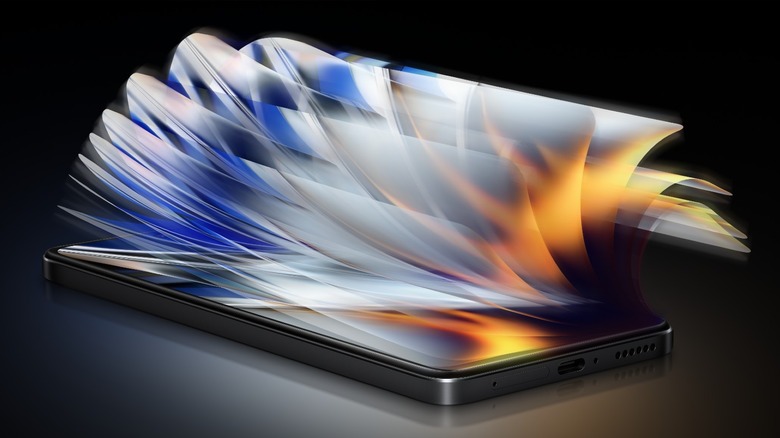
Poco, the company that started as a Xiaomi brand, has unveiled its new Poco X4 Pro 5 and M4 Pro smartphones, both introduced as part of the company's Mobile World Congress 2022 lineup. Poco says the X4 Pro 5G has the distinction of being its latest flagship model, offering consumers everything from 67W fast charging to a Qualcomm Snapdragon 5G processor and an AMOLED display with a 120Hz refresh rate.
As expected, the Poco M4 Pro comes in second to its more capable sibling, offering generally noteworthy specs without blurring the line between the two models. Consumers can expect an AMOLED 90Hz display, about half the camera resolution of the X4 Pro 5G, and 22W fast charging, which is still pretty decent. Of course, Poco's most appealing aspect isn't a feature at all, but rather its generally low price point. Consumers in covered markets will be able to get the X4 Pro 5G flagship with a starting price of €299, which works out to around $335 USD.
Poco X4 Pro 5G focuses on the display
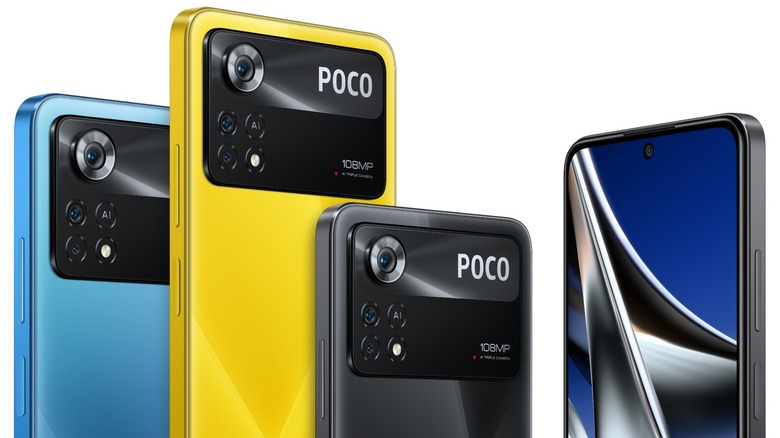
Despite its comfortably low price point, Poco positions the X4 Pro 5G as a daily driver that offers an overall "flagship-level experience." At the top of that high-end experience resides the display, which, at least on paper, appears very impressive for a handset that technically falls within the "budget" category.
The flagship sports a 6.67-inch AMOLED panel with DotDisplay tech, the aforementioned 120Hz refresh rate, and a 360Hz touch sampling rate. Of note, this is the first Poco "X" series device to earn itself an AMOLED screen, giving consumers loyal to the brand a good reason to upgrade.
The display has a 2400 x 1080 resolution (FHD+) and a DCI-P3 color gamut, plus the company says this model comes with an SGS Eye Care certification, which is supposed to make the device easier on one's eyes when used for long periods of time.
Joining the display is Qualcomm's Snapdragon 695 5G processor, which is a mid-tier chip and entirely expected on a handset aiming for a low starting cost. Multiple configurations will be offered, but customers who don't mind paying a bit more can get up to 8GB of RAM and 256GB of storage. On top of that, Poco includes Dynamic RAM Expansion Technology to earmark 3GB for extra RAM capacity — this should, ideally, make more intensive applications like certain mobile games run better.
The rest of the specs are decent, too
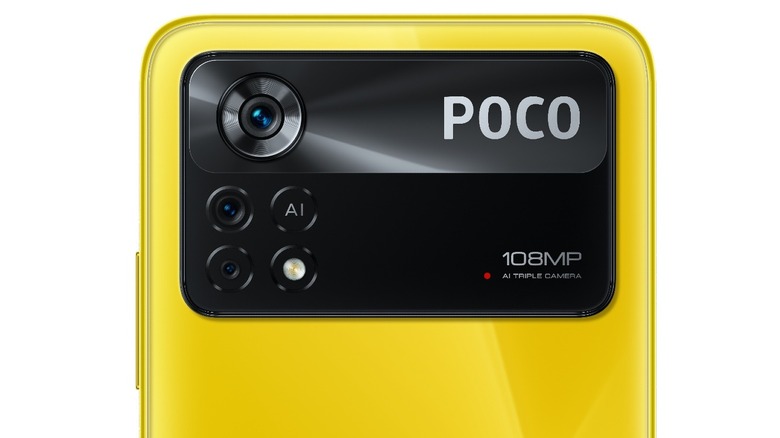
As for the other specs, Poco has managed to strike a solid balance between features and cost. Users can expect a 108MP main camera, and though the high resolution doesn't necessarily guarantee good image quality, it should be noted the sensor is generously sized at 1/1.52-inches. This is the first time Poco has used a sensor that large, plus it boasts 9-in-1 binning tech, the combination of which should ensure ample lighting for solid quality.
Joining the main camera is an 8MP ultra-wide module and the 2MP macro camera that has proven popular with Chinese phone manufacturers. The front camera, meanwhile, has a decent 16MP sensor alongside a panorama selfie mode. Camera features round out with a dual-video (front and back cameras) shooting option and various modes and filters.
Rounding out the specs is a 5,000mAh battery capacity that'll get users through a full day of usage, according to Poco. Just as important as the battery capacity is the 67W "turbo" fast charging, which Poco claims can get the battery to a 70% charge in 22 minutes.
There's 5G connectivity, of course, as well as stereo audio. Finally, the flagship runs MIUI 13, the latest version of Xiaomi's custom Android interface.
It's unclear which markets will get the Poco X4 Pro 5G and when the company plans to release the model. However, we do have some pricing and configuration info: the 6GB/128GB version will cost €299, while the 8GB/256GB version will be pricier at €349. This model will launch in "Poco Yellow," Laser Blue, and Laser Black color options.
Poco M4 Pro's lower price will cost you features
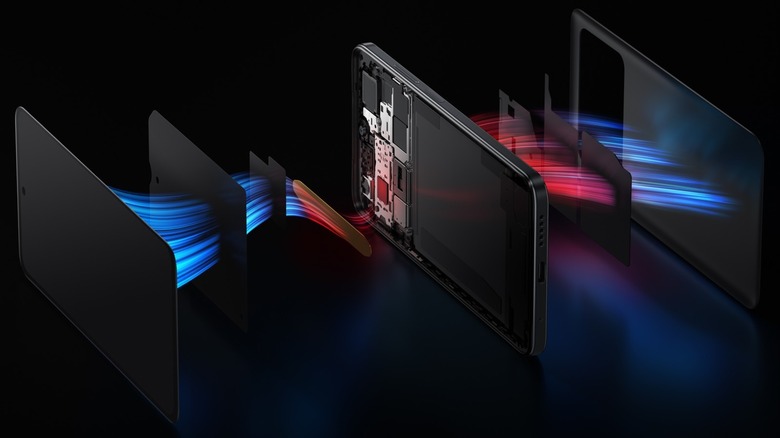
Joining the flagship model is Poco's new M4 Pro, a cheaper alternative to the X4 Pro 5G that, among other things, comes with reduced camera and display specs, as well as the notable lack of 5G connectivity. Consumers who don't mind sticking with 4G LTE for their mobile-streaming needs should note the relatively steep drop in features comes with a similarly lower price tag: the 6GB/128GB version will be priced at €219, while the 8GB/256GB version will be priced at €269.
The M4 Pro features a 6.43-inch AMOLED display with DotDisplay tech, a 90Hz refresh rate, and a 180Hz touch sampling rate. As with the X4 Pro 5G, there's also a DCI-P3 color gamut and SGS Eye Care Display certification, plus the addition of Seamless Display certification. Consumers get the same FHD+ resolution, but the camera is trimmed at 64MP for the main shooter. There are the same 8MP ultra-wide-angle and 2MP macro cameras, however.
The performance will be a bit lower due to the use of MediaTek's Helio G96 paired with the ARM Mali G57 MC2 GPU. The battery sports the same 5,000mAh capacity, but there's only 33W fast charging, which will get users to a full charge in around an hour. Of note, this model also packs Dynamic RAM Expansion Technology for the same extra 3GB of memory.
The Best Smartphones Of 2021 Ranked
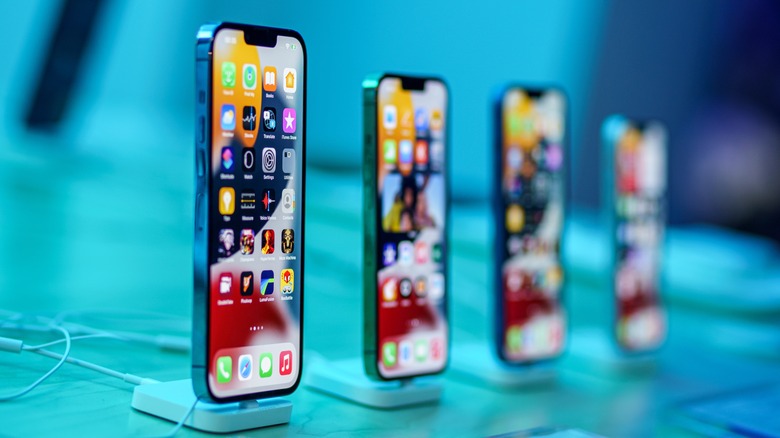
The smartphone market has someone for everyone, whether you're looking for a budget device that doesn't compromise on features or a flagship model sporting the latest and greatest hardware. Despite chip shortages, shipping delays, and production bottlenecks, manufacturers still managed to deliver an assortment of new handsets in 2021, including these top-of-the-line models.
1. iPhone 13
Love it or hate it, Apple makes great products. Samsung was a strong competitor this year, launching high-end smartphones of both the folding and non-folding variety, but the company still hasn't managed to outdo Apple at what Apple does best: offer a tightly integrated, cohesive, and highly useable ecosystem that seamlessly blends its own hardware, software, and services.
Buying an iPhone is more than just selecting iOS as your mobile operating system of choice. The handset works seamlessly with the Apple Watch, which itself still trumps anything you can get sporting Wear OS. In the same way, the iPhone works well with the iPad — which, again, exceeds any other tablet you can get for the simple reason that Android is entirely lacking on slates.
You don't have to buy into the wider Apple ecosystem to get the iPhone, of course, and it's possible the iPhone lacks a key feature you can't live without, whether that's a microSD card slot, built-in stylus, or 3.5mm audio jack. If you're content with a phone that doesn't include those finer trimmings, however, the iPhone 13 is worth serious consideration if you're looking for a high-end upgrade.
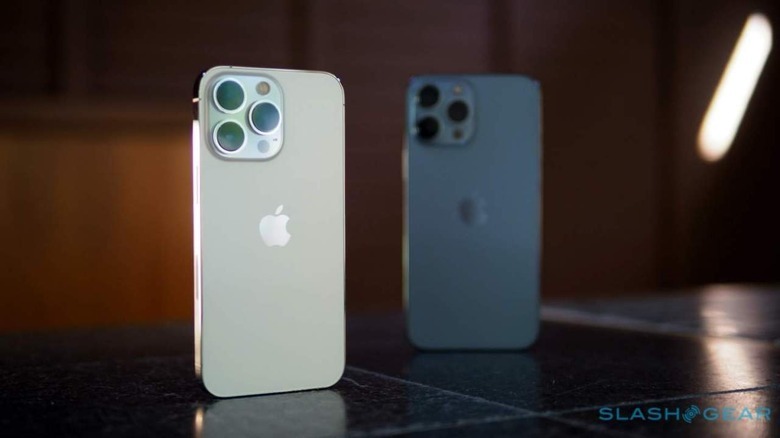
The iPhone 13 line is comprised of the iPhone 13 mini, iPhone 13, iPhone 13 Pro, and iPhone 13 Pro Max. These models range in size from 5.4-inches to 6.7-inches, with the best features being found in the two Pro options.
The iPhone 13 Pro packs a Super Retina XDR screen with ProMotion and Ceramic Shield, an IP68 water resistance rating, Apple's A15 Bionic chip, 5G support (including mmWave), ultra-wideband for using things like digital keys, Bluetooth 5, WiFi 6, and gigabit LTE.
Apple put a lot of focus on the cameras and related software with the iPhone 13 Pro. In terms of hardware, buyers get a "Pro" 12-megapixel camera system that includes wide, ultra-wide, and telephoto cameras. That is joined by the 12-megapixel TrueDepth camera on the front of the handset, which also powers the Face ID feature.
These cameras are joined by a variety of software features, including Apple's new "Cinematic mode" for recording movie-like videos. This new mode includes support for the TrueDepth, wide, and telephoto cameras, as well as Dolby Vision HDR.
The iPhone 13 Pro's camera features also include 6x optical zoom, 3x optical zoom for the telephoto lens specifically, support for macro video recording, improved low-light performance, "Photography Styles," and what Apple describes as an end-to-end workflow directly on the phone that includes editing in ProRes and Dolby Vision.
Not interested in Apple products? Fortunately, several excellent Android alternatives were released this year.
2. Galaxy S21
Samsung's Galaxy line has been around for years and there's a reason it has remained so popular. The latest and greatest installment in the series, the Galaxy S21, offers a huge number of features, but at a price not all consumers are willing to embrace. If cost isn't an issue for you, check out the Galaxy S21 Ultra 5G, the top model in the new line.
The Galaxy S21 Ultra 5G has a huge 6.8-inch Quad HD+ Dynamic AMOLED 2X Infinity-O display with 3200 x 1400 pixel resolution, giving it a pixel density of 515ppi (pixels per inch). Notable features include HDR10+ certification, a 120Hz refresh rate, a 40-megapixel "hole-punch" selfie camera, four rear cameras (10-megapixel telephoto F2.4 and F4.9 units, 108-megapixel wide-angle, and 12-megapixel ultra-wide), as well as a pressure-sensitive S Pen.
In addition to the LTE and 5G connectivity, the model also supports up to 2.4Gbps download speeds, offers Bluetooth 5.2, and includes ultra wideband (UWB) support for digital keys. The model is powered by the Snapdragon 888 alongside 12GB RAM and 512GB internal data storage.
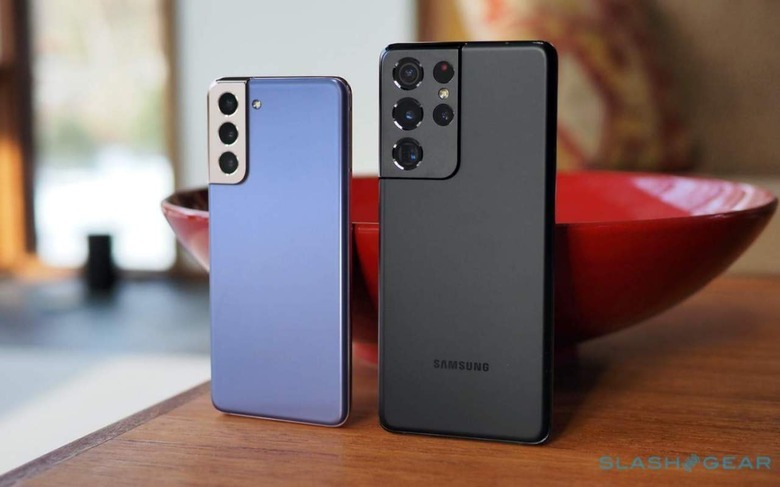
The S21 Ultra packs a bunch of hardware capabilities and software features targeting what consumers are often most interested in. This model's camera features are particularly notable with things like 100x "space zoom," a 40-megapixel camera combined with software that produces what Samsung claims are "studio-quality portraits," and support for shooting videos in 8K resolution.
The S Pen inclusion takes the S21 Ultra to the next level with tablet-like functionality, making it easier to handle a wide variety of advanced features – like editing videos and photos directly on the device. This is the first Galaxy model to pack a 5nm processor, enabling faster performance — including when it comes to AI-powered features — compared to previous models.
The 5000mAh battery combined with some efficiency features gives users a runtime beyond a full day (though it largely depends on how the device is used), plus there are convenience features like wireless PowerShare for charging, for example, a pair of true wireless earbuds with wireless charging support.
The powerful hardware, sophisticated software, and well-rounded array of features make the S21 Ultra one of the top smartphones on the market right now, though its price will be the biggest issue for many consumers. The Galaxy S21 5G (the one with the 6.2-inch display) starts at $799.99, but making the jump to the Ultra 5G model pushes the starting price to $1,200. There are some ways to reduce the price, including trading in certain devices for a substantial discount, but the final price will still likely be substantial.
3. Pixel 6
Though Google's Pixel has never managed to grab a significant share of the smartphone market, the company continues to update the line, arguably using its own hardware as a way to showcase Android in its purest form.
The Pixel 6 was released this year as the latest major installment in the smartphone family, bringing key features like Google's Tensor chip, the Titan M2 security chip with five years of updates, two rear camera, and what Google calls an adaptive battery that optimizes energy use so consumers can go longer between charging sessions.
Google historically offered a single camera with its Pixel smartphones, electing to enhance its mobile camera capabilities with software. This is known as computational photography, which utilizes artificial intelligence and software to improve the raw image data captured with the Pixel's camera. It was inevitable that Google would eventually increase the number of cameras included on its handsets, however, and the Pixel 5 marked the first time a model in this line was released with a dual-camera system. The Pixel 6 continues this trend with its own dual-camera array.
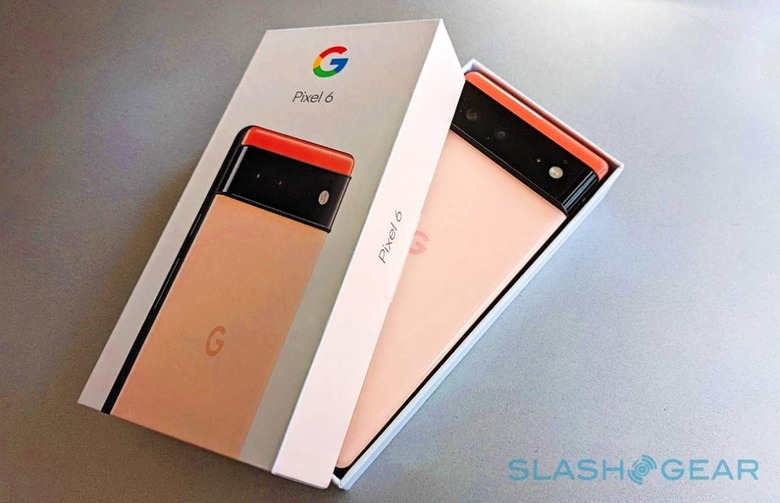
The Pixel 6 packs larger camera sensors compared to the previous model, which, among other things, enables the phone to gather 150-percent more light for brighter, higher-quality images in lower-light environments. This latest flagship model includes an ultra-wide lens for capturing larger scenes.
The software magic remains, including some features that would otherwise require you to fire up Photoshop. Magic Eraser is one excellent example: it resides on Google Photos and works by removing unwanted objects and people from images. Portrait Mode offers a blurred background for higher-quality selfies, plus there's Motion Mode for more dynamic action shots in environments with a lot of movement.
The model packs other notable features, including support for 5G networks, real-time language translations integrated into things like chat and podcast captions, an IP68 rating against dust and water exposure, and a high refresh rate for what Google calls "Smooth Display." Though you won't get a stylus like the one offered with the S21 Ultra, the Pixel 6 comes with some of its own perks, the best being its regular software updates known as feature drops.
Adding to the appeal is the somewhat lower price tag accompanying the Pixel 6; an unlocked version of the device with 128GB starts at $599, while the 256GB model starts at $699, making it a more economical choice for consumers who want high-end features and a bunch of storage space while staying well below a $1,000 price point.
4. Galaxy Z Flip 3
Many consumers aren't ready to embrace the foldable evolution yet, but this year brought a couple of excellent options for those who can't wait any longer. Samsung's Galaxy Z Flip 3 is the latest installment in the company's foldable product lines; this is the version that folds like an old-school clamshell flip phone, not to be confused with the book-style Galaxy Z Fold 3.
The Galaxy Z Flip 3 beats out the Z Fold 3 on this list for one simple reason: it is cheaper and, with the right trade-in device, the price can be dropped down to a very comfortable $325 or so. The model's defining feature is its flexible display, enabling the smartphone to fold in half horizontally across the body.
When unfolded, the Galaxy Z Flip 3 has a 6.7-inch screen; the device looks like a long, ordinary high-end smartphone. When folded, however, the length drops to just over 3-inches with a width a bit over half an inch. The screen packs a Full HD+ (2640 x 1080) Dynamic AMOLED panel with Infinity Flex Display, a 22:9 aspect ratio, 120Hz adaptive refresh rate, and 425ppi.
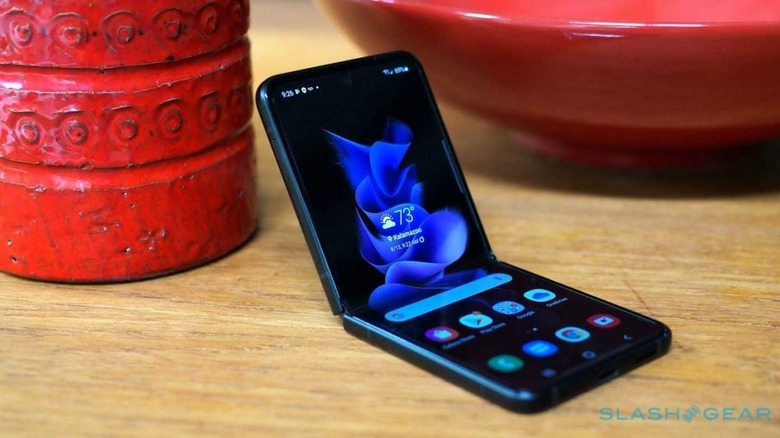
This main display is joined by a small 1.9-inch Super AMOLED screen on the rear of the device that shows basic details when the phone is folded. This rear display has a 260 x 512 resolution. The model packs many features you'd expect in a flagship model, including a 10-megapixel front-facing camera, while the rear camera array includes two 12-megapixel ultra-wide cameras, one with optical image stabilization, dual pixel autofocus, 78-degree field of view, and an F1.8 aperture. The other ultra-wide camera has an F2.2 aperture and a much wider 123-degree field of view.
The unique form factor aside, the Galaxy Z Flip 3 brings many of the same features you'd get on Samsung's other flagship handsets, including wireless charging, fast charging support, 5G connectivity, nano-SIM and eSIM, stereo speakers, and an array of sensors (accelerometer, proximity, etcetera). Other notable offerings include a 5nm processor, 8GB of RAM, up to 256GB of storage, Bluetooth 5.1, USB-C connectivity, a 3300mAh battery, and support for recording up to 4K videos.
5. OnePlus 9
This year brought the latest and arguably greatest OnePlus flagship, the OnePlus 9. Note that we're talking specifically about the US version of this phone; the model is available in other markets, as well, and its exact features may vary a bit depending on where it is purchased.
The OnePlus 9 features a 6.55-inch Fluid AMOLED display with a 120Hz refresh rate, 20:9 aspect ratio, and 2400 x 1080 resolution. The handset is powered by the Snapdragon 888 and it runs OnePlus's OxygenOS based on Android 11. Storage and memory are notable at 128GB/8GB, while the battery is on the large end of the spectrum with a 4500mAh capacity (fast charging is supported).
The handset packs a main 48-megapixel camera with a Sony IMX689 sensor and an F1.8 aperture lens; this is joined by an ultra-wide 50-megapixel model sporting the Sony IMX766 sensor and an F2.2 aperture lens. Interestingly enough, OnePlus also includes a 2-megapixel monochrome camera, which is a relative rarity among smartphones (Huawei included something similar with its P20 Pro and P10 models).
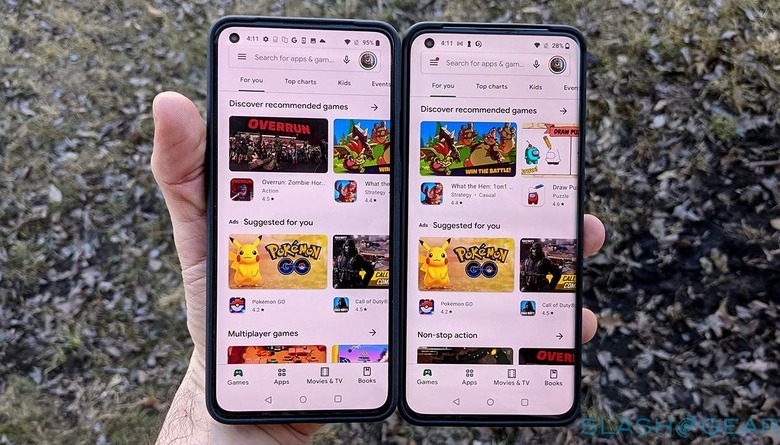
The camera features are extensive, including support for recording in 4K at 60fps and 8K at 30fps, plus there's slow-motion at up to 480fps, support for capturing time-lapses in 4K resolution, and there's a dual-LED flash. The front camera, meanwhile, skews toward an average offering at 16-megapixels with electronic image stabilization, fixed focus, and an F2.4 aperture.
Consumers looking for a bit more can check out the OnePlus 9 Pro variant, which boosts the features with a similar uptick in price. This model packs a more notable 6.7-inch Fluid AMOLED display with LTPO, 120Hz refresh rate, 3216 x 1440 resolution, 20.1:9 aspect ratio, and 10-bit color depth.
The model is likewise powered by a Snapdragon 888 alongside an X60 chipset for 5G connectivity. Storage and memory are higher at 256GB/12GB, respectively, while the battery sits at 4500mAh with fast charging support and 50W wireless charging.
The cameras are likewise upgraded with a 48-megapixel main camera packing optical image stabilization and an F1.8 aperture, a 50-megapixel ultra-wide camera with a freeform lens, an 8-megapixel telephoto camera with optical image stabilization, and the same 2-megapixel monochrome camera found on the non-Pro version.
The OnePlus 9 Pro is the one you'll want to consider if you're looking to upgrade to a model you'll keep for a while. The price is high at $1,069, though OnePlus currently lists the model at a discounted $849. Consumers in the US have two options: an unlocked model they can take to their favorite carrier or a T-Mobile version that runs on the provider's network.
6. Galaxy Z Fold 3
One of the most interesting Android smartphones released this year is also the most expensive: Samsung's massive book-style Galaxy Z Fold 3 foldable. This model has a 7.6-inch Infinite Flex Display, essentially making it a small tablet when unfolded; the screen is a more typical 6.2-inches when folded.
Given that the Z Fold 3 is essentially a hybrid device that sits between a smartphone and tablet, it's no surprise Samsung offers S Pen Pro and S Pen Fold accessories, enabling users to draw and write on the display the same way they would a Note device or a Samsung tablet.
The model packs an IPX8 water resistance rating, which means the device can handle exposure to water to depths of up to 5ft for up to half an hour. The latest Fold is powered by a Snapdragon 888 octa-core processor; it packs up to 512GB of storage and 12GB of memory, a 4,400mAh battery, and a 120Hz adaptive display refresh rate.
The camera array is notable with three units on the back: a 12-megapixel wide-angle, 12-megapixel ultra-wide-angle, and 12-megapixel telephoto cameras. The front, meanwhile, sports two cameras: a main 4-megapixel unit and a 10-megapixel front cover camera.
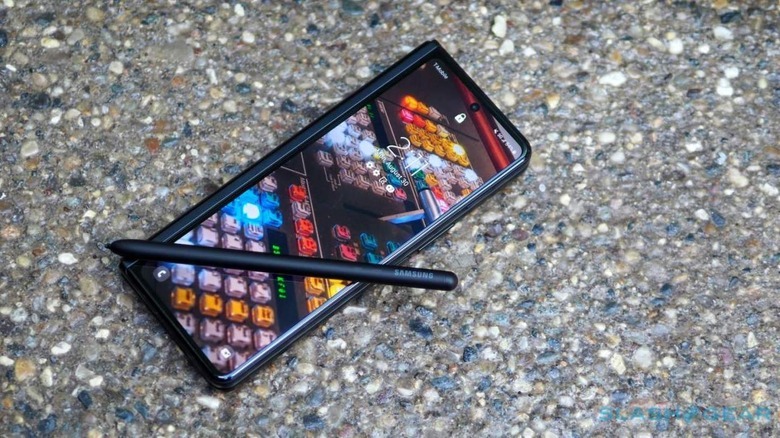
The camera loadout isn't as impressive as what you get with the S21 Ultra, but the device's main purpose resides in its unique form factor, not its photo capabilities. Samsung leverages the ultra-wide display by offering unique multi-tasking features, delivering what the company refers to as "PC-like productivity" — though, keep in mind that only some apps support the Flex mode.
The Galaxy Z Fold 3 is a productivity powerhouse, targeting consumers who often do business and get work done directly on their handsets. The tablet-like form factor enables users to leave their dedicated tablets at home, instead unfolding their smartphone to markup documents, sign paperwork, edit videos, and other tasks that are more difficult on smaller traditional form factors.
There's one huge downside to this model, however, and that is its astronomical price tag. With a starting price of $1,900 unlocked, that makes the phone more expensive than many nice ultrabook laptops and, for example, the 12.9" iPad Pro with 1TB of storage.
Consumers are very much paying for the novelty of having a large folding smartphone, one that, while still excellent, isn't going to stand up against something like an M1 iPad Pro when it comes to performance, app variety, and the user interface. For this reason, buyers should be mindful of what they truly need out of a mobile device and whether the Galaxy Z Fold 3 is able to meet those needs.
If you decide to pick up a model, keep in mind that Samsung will drop the price to $849 USD with certain trade-ins, plus it includes the Galaxy Buds 2 for free with the purchase (if you buy the device directly from Samsung's website, at least).
7. Huawei P50 Pro
Last but not least is the Huawei P50 Pro, a high-end smartphone the company released this year with one massive problem: it doesn't run Android. This may be a dealbreaker for many consumers, but if you don't mind being limited to Huawei's HarmonyOS, there's a lot to like about this flagship model.
The Huawei P50 Pro sports a 6.6-inch OLED display with a 120Hz refresh rate and 2700 x 1228 resolution. The model is powered by the Snapdragon 888 4G alongside Adreno 660 graphics; there's 8GB/256GB memory and storage, respectively, as well as a 4360mAh battery with fast and wireless charging support.
Huawei focused extensively on the P50 Pro's camera array with four units on the back: a 50-megapixel "True-Chroma" module packing optical image stabilization, a 40-megapixel True-Chroma F1.6 module, a 13-megapixel ultra-wide-angle F2.2 module, and a 64-megapixel telephoto camera with optical image stabilization, autofocus, and F3.5 aperture. The cameras include phase focus and contrast focus options, plus there's hybrid and digital zoom for those times when the optical zoom isn't enough.
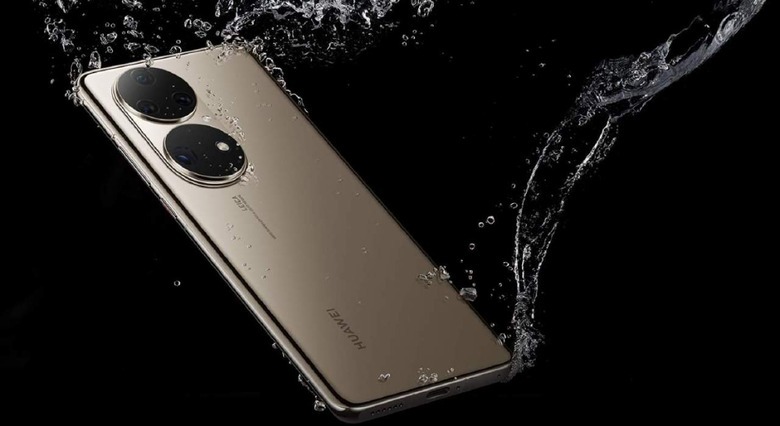 Huawei
HuaweiThe camera hardware is paired with a variety of software-based features, including an AI-powered "Cinemagraph" mode, 4K Predictive Focus, time-lapse shooting, audio zoom, macro and portrait modes, monochrome camera capture, Moving Picture, and more. The front-facing camera, meanwhile, includes a 13-megapixel wide-angle module combined with software features like smart eye tracking, panorama, AR lenses, and slow-motion selfie capture.
Other notable features include an IP68 rating, meaning the phone has a degree of resistance against dust and water, plus there's a dual-SIM version of the handset with 4G LTE support, Bluetooth 5.2, USB-C connectivity, NFC, GPS, and the typical array of sensors found on flagships (fingerprint, gravity, infrared, gyroscope, ambient light, etcetera).
Again, the big downside here is the P50 Pro's lack of Android and Google services; users are instead given access to Huawei's own HarmonyOS, which, while nice, comes with far fewer app options than the average consumer is used to. You may not be able to download your favorite apps, and that could be a big deal, particularly if you need certain unsupported apps for work. Speaking of work, depending on the industry, you may not be allowed to use a Huawei handset for business purposes due to security rules.
Given the P50 Pro's high price (around $1,200 USD, depending on configuration) and its many downsides, it's really not advisable for someone outside of China to purchase the model — there are alternatives like the S21 Ultra that come in around the same price point with many of the same or similar features, but with Android and Google services. With that said, the P50 Pro — from a hardware standpoint — is still one of the most notable flagships released in 2021.
Recommend
About Joyk
Aggregate valuable and interesting links.
Joyk means Joy of geeK